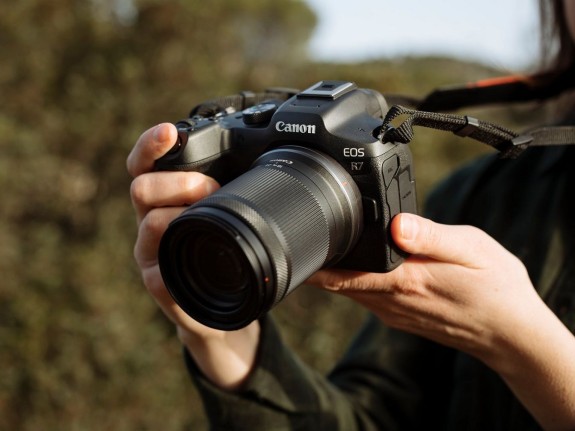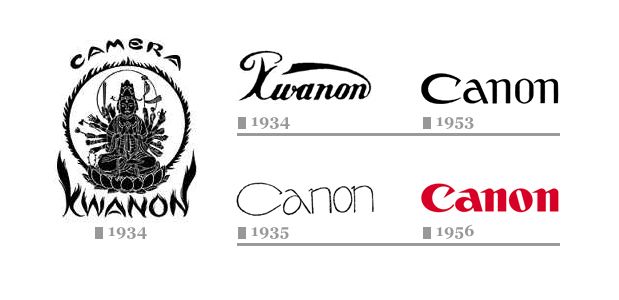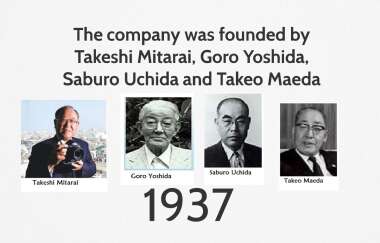Canon: The brand that revolutionized display technologies…
Canon, which started its operations in 1937, “A camera for every house!” justifying its slogan, it has made cameras no longer a luxury.

The company, which initially set out to produce 35 mm cameras, has made many revolutions in image technologies in the 80 years that have passed. Moreover, it had a very wide product variety. Today, we can see the Canon label on many products, from cameras to calculators, from copiers to cartridges and toners.
A success story…
The founding adventure of Canon, a multinational Japanese brand, actually dates back to the early 1930s. Working on various prototypes in the field of optics at the Precision Optical Instruments Laboratory, Takeshi Mitarai, Goro Toshida, Saburo Uchida and Takeo Maeda laid the foundations of the company in Tokyo by registering the products they developed.
The name Canon comes from Kwanon, the god of forgiveness in Buddhism. This name also has meanings such as "rule, standard" in English. One of the main purposes in choosing this name was to reflect the company's commitment to setting new rules and standards in photography. The high quality of their products has indeed made it possible to reevaluate many things in the field of photography.

Since its first years of operation, Canon has been involved in a production process full of high technology and creativity. The first 35 mm focal plane-shutter camera, which was launched in 1937, gave the hints of this development process. This success was followed by the first X-ray camera he developed in 1940. In 1947, the name of the company was changed to Canon Camera Corporation and the process of opening to the world market was started.
In 1955, the company opened to the world market. Its products found a new consumer base in the war-weary European market. In this period when photography started to become a hobby, the price advantage of these products enabled it to consolidate its power in the European market. Thanks to its newly opened production facilities in Europe, it managed to overcome the high tax barrier applied to imported products and developed its market dominance.
In 1958, Canon launched a new lens developed for television broadcasting and proved to be ambitious in broadcasting after photography. In the 1960s, it started to compete with world giants in electronic calculators. The Canola 130 model he developed won the title of the world's first 10-key electronic calculator. In 1969 the company changed its name to Canon Inc. and started investing in office automation and electronic tools.
The company, which has revolutionized image technologies with the cameras and cameras it has developed, has focused on office automation and electronic tools since the mid-1970s. In particular, he attached great importance to work on inkjet technology. In this period, when it rapidly increased its product range, it continued to pioneer new technologies.
In the special spray technology he developed, heat energy was used to remove the ink drops. Thus, he developed the world's first thermal injet (Buble Jet) technology. In this new technology, heat energy is used to remove ink drops. Applying the ink droplets formed on the surface by a syringe needle containing ink on printers, Canon broke new ground with the Buble Jet-80, which it launched in 1985.
The year 1988 has a special significance in Canon's brand history. On this date, he introduced his corporate philosophy, which he called Kyosei, to the public, based on Buddhism, just like in the establishment process. This philosophy, which means "living and working for the common good" in Turkish, reflected the corporate principles of the company. It was also true of the innovations he pioneered. As a matter of fact, the company has a production policy that not only develops a product with a more powerful technology, but also facilitates human life and aims for common benefit.
The 2000s and the Digital Revolution
The thermal injet technology developed by Canon has undergone a significant transformation towards the 1990s. The ink tank and print head used in printers have been transformed into a single ultra-compact ink cartridge. And so, the world's first consumer kit printer, the BJC-600, was launched. With this new cartridge technology it has developed, it has become very easy to get full color output on plain paper. BJ F850, which was introduced to the market in 1999, had a special photolithographic inkjet technology for high quality printing.
The 2000s were the years when the office environment started to become increasingly "digital" with a large number of electronic tools. Instead of following this change, Canon aimed to have a share in this change. Moreover, office automation not only had to be digitized, it also had to gain functionality. And aesthetic elements had to be added to this functionality.
In this context, the company updated its production policies and gained strength during the digital revolution. Computer equipment and especially printers were highly appreciated in its product range. The wireless printing systems and cloud-based service connections he developed were highly appreciated. Because these products were a great fit for the changing lifestyle during the digital revolution.
On the other hand, the revolutions it created in display technology continued with EOS 5, which it launched in 1992. These products, which have AF (Auto Focus) technology, have the title of the first camera that can be controlled by eye. In 1995, it introduced the EF 75, the first built-in image stabilization SLR lens. And it consolidated its market power with the EOS-1N RS, a camera with a shooting speed of 10 frames per second.

